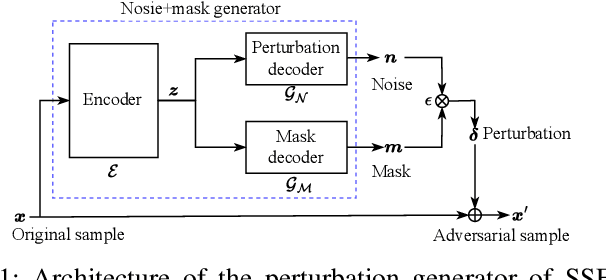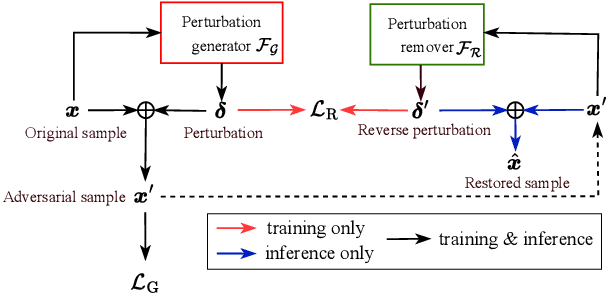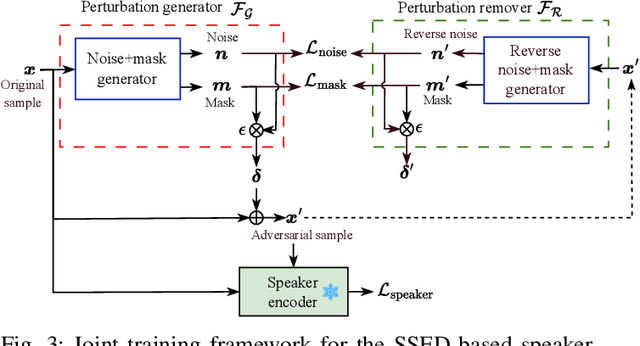speech
Papers and Code
Beating Harmful Stereotypes Through Facts: RAG-based Counter-speech Generation
Oct 14, 2025Counter-speech generation is at the core of many expert activities, such as fact-checking and hate speech, to counter harmful content. Yet, existing work treats counter-speech generation as pure text generation task, mainly based on Large Language Models or NGO experts. These approaches show severe drawbacks due to the limited reliability and coherence in the generated countering text, and in scalability, respectively. To close this gap, we introduce a novel framework to model counter-speech generation as knowledge-wise text generation process. Our framework integrates advanced Retrieval-Augmented Generation (RAG) pipelines to ensure the generation of trustworthy counter-speech for 8 main target groups identified in the hate speech literature, including women, people of colour, persons with disabilities, migrants, Muslims, Jews, LGBT persons, and other. We built a knowledge base over the United Nations Digital Library, EUR-Lex and the EU Agency for Fundamental Rights, comprising a total of 32,792 texts. We use the MultiTarget-CONAN dataset to empirically assess the quality of the generated counter-speech, both through standard metrics (i.e., JudgeLM) and a human evaluation. Results show that our framework outperforms standard LLM baselines and competitive approach, on both assessments. The resulting framework and the knowledge base pave the way for studying trustworthy and sound counter-speech generation, in hate speech and beyond.
Structured Sparsity and Weight-adaptive Pruning for Memory and Compute efficient Whisper models
Oct 14, 2025Whisper models have achieved remarkable progress in speech recognition; yet their large size remains a bottleneck for deployment on resource-constrained edge devices. This paper proposes a framework to design fine-tuned variants of Whisper which address the above problem. Structured sparsity is enforced via the Sparse Group LASSO penalty as a loss regularizer, to reduce the number of FLOating Point operations (FLOPs). Further, a weight statistics aware pruning algorithm is proposed. We also design our custom text normalizer for WER evaluation. On Common Voice 11.0 Hindi dataset, we obtain, without degrading WER, (a) 35.4% reduction in model parameters, 14.25% lower memory consumption and 18.5% fewer FLOPs on Whisper-small, and (b) 31% reduction in model parameters, 15.29% lower memory consumption and 16.95% fewer FLOPs on Whisper-medium; and, (c) substantially outperform the state-of-the-art Iterative Magnitude Pruning based method by pruning 18.7% more parameters along with a 12.31 reduction in WER.
Content Anonymization for Privacy in Long-form Audio
Oct 14, 2025Voice anonymization techniques have been found to successfully obscure a speaker's acoustic identity in short, isolated utterances in benchmarks such as the VoicePrivacy Challenge. In practice, however, utterances seldom occur in isolation: long-form audio is commonplace in domains such as interviews, phone calls, and meetings. In these cases, many utterances from the same speaker are available, which pose a significantly greater privacy risk: given multiple utterances from the same speaker, an attacker could exploit an individual's vocabulary, syntax, and turns of phrase to re-identify them, even when their voice is completely disguised. To address this risk, we propose new content anonymization approaches. Our approach performs a contextual rewriting of the transcripts in an ASR-TTS pipeline to eliminate speaker-specific style while preserving meaning. We present results in a long-form telephone conversation setting demonstrating the effectiveness of a content-based attack on voice-anonymized speech. Then we show how the proposed content-based anonymization methods can mitigate this risk while preserving speech utility. Overall, we find that paraphrasing is an effective defense against content-based attacks and recommend that stakeholders adopt this step to ensure anonymity in long-form audio.
I-DCCRN-VAE: An Improved Deep Representation Learning Framework for Complex VAE-based Single-channel Speech Enhancement
Oct 14, 2025Recently, a complex variational autoencoder (VAE)-based single-channel speech enhancement system based on the DCCRN architecture has been proposed. In this system, a noise suppression VAE (NSVAE) learns to extract clean speech representations from noisy speech using pretrained clean speech and noise VAEs with skip connections. In this paper, we improve DCCRN-VAE by incorporating three key modifications: 1) removing the skip connections in the pretrained VAEs to encourage more informative speech and noise latent representations; 2) using $\beta$-VAE in pretraining to better balance reconstruction and latent space regularization; and 3) a NSVAE generating both speech and noise latent representations. Experiments show that the proposed system achieves comparable performance as the DCCRN and DCCRN-VAE baselines on the matched DNS3 dataset but outperforms the baselines on mismatched datasets (WSJ0-QUT, Voicebank-DEMEND), demonstrating improved generalization ability. In addition, an ablation study shows that a similar performance can be achieved with classical fine-tuning instead of adversarial training, resulting in a simpler training pipeline.
Mind-Paced Speaking: A Dual-Brain Approach to Real-Time Reasoning in Spoken Language Models
Oct 10, 2025Real-time Spoken Language Models (SLMs) struggle to leverage Chain-of-Thought (CoT) reasoning due to the prohibitive latency of generating the entire thought process sequentially. Enabling SLMs to think while speaking, similar to humans, is attracting increasing attention. We present, for the first time, Mind-Paced Speaking (MPS), a brain-inspired framework that enables high-fidelity, real-time reasoning. Similar to how humans utilize distinct brain regions for thinking and responding, we propose a novel dual-brain approach, employing a "Formulation Brain" for high-level reasoning to pace and guide a separate "Articulation Brain" for fluent speech generation. This division of labor eliminates mode-switching, preserving the integrity of the reasoning process. Experiments show that MPS significantly outperforms existing think-while-speaking methods and achieves reasoning performance comparable to models that pre-compute the full CoT before speaking, while drastically reducing latency. Under a zero-latency configuration, the proposed method achieves an accuracy of 92.8% on the mathematical reasoning task Spoken-MQA and attains a score of 82.5 on the speech conversation task URO-Bench. Our work effectively bridges the gap between high-quality reasoning and real-time interaction.
A Study of the Removability of Speaker-Adversarial Perturbations
Oct 10, 2025



Recent advancements in adversarial attacks have demonstrated their effectiveness in misleading speaker recognition models, making wrong predictions about speaker identities. On the other hand, defense techniques against speaker-adversarial attacks focus on reducing the effects of speaker-adversarial perturbations on speaker attribute extraction. These techniques do not seek to fully remove the perturbations and restore the original speech. To this end, this paper studies the removability of speaker-adversarial perturbations. Specifically, the investigation is conducted assuming various degrees of awareness of the perturbation generator across three scenarios: ignorant, semi-informed, and well-informed. Besides, we consider both the optimization-based and feedforward perturbation generation methods. Experiments conducted on the LibriSpeech dataset demonstrated that: 1) in the ignorant scenario, speaker-adversarial perturbations cannot be eliminated, although their impact on speaker attribute extraction is reduced, 2) in the semi-informed scenario, the speaker-adversarial perturbations cannot be fully removed, while those generated by the feedforward model can be considerably reduced, and 3) in the well-informed scenario, speaker-adversarial perturbations are nearly eliminated, allowing for the restoration of the original speech. Audio samples can be found in https://voiceprivacy.github.io/Perturbation-Generation-Removal/.
Accent-Invariant Automatic Speech Recognition via Saliency-Driven Spectrogram Masking
Oct 10, 2025Pre-trained transformer-based models have significantly advanced automatic speech recognition (ASR), yet they remain sensitive to accent and dialectal variations, resulting in elevated word error rates (WER) in linguistically diverse languages such as English and Persian. To address this challenge, we propose an accent-invariant ASR framework that integrates accent and dialect classification into the recognition pipeline. Our approach involves training a spectrogram-based classifier to capture accent-specific cues, masking the regions most influential to its predictions, and using the masked spectrograms for data augmentation. This enhances the robustness of ASR models against accent variability. We evaluate the method using both English and Persian speech. For Persian, we introduce a newly collected dataset spanning multiple regional accents, establishing the first systematic benchmark for accent variation in Persian ASR that fills a critical gap in multilingual speech research and provides a foundation for future studies on low-resource, linguistically diverse languages. Experimental results with the Whisper model demonstrate that our masking and augmentation strategy yields substantial WER reductions in both English and Persian settings, confirming the effectiveness of the approach. This research advances the development of multilingual ASR systems that are resilient to accent and dialect diversity. Code and dataset are publicly available at: https://github.com/MH-Sameti/Accent_invariant_ASR
The Speech-LLM Takes It All: A Truly Fully End-to-End Spoken Dialogue State Tracking Approach
Oct 10, 2025This paper presents a comparative study of context management strategies for end-to-end Spoken Dialog State Tracking using Speech-LLMs. We systematically evaluate traditional multimodal context (combining text history and spoken current turn), full spoken history, and compressed spoken history approaches. Our experiments on the SpokenWOZ corpus demonstrate that providing the full spoken conversation as input yields the highest performance among models of similar size, significantly surpassing prior methods. Furthermore, we show that attention-pooling-based compression of the spoken history offers a strong trade-off, maintaining competitive accuracy with reduced context size. Detailed analysis confirms that improvements stem from more effective context utilization.
Estimating Brain Activity with High Spatial and Temporal Resolution using a Naturalistic MEG-fMRI Encoding Model
Oct 10, 2025



Current non-invasive neuroimaging techniques trade off between spatial resolution and temporal resolution. While magnetoencephalography (MEG) can capture rapid neural dynamics and functional magnetic resonance imaging (fMRI) can spatially localize brain activity, a unified picture that preserves both high resolutions remains an unsolved challenge with existing source localization or MEG-fMRI fusion methods, especially for single-trial naturalistic data. We collected whole-head MEG when subjects listened passively to more than seven hours of narrative stories, using the same stimuli in an open fMRI dataset (LeBel et al., 2023). We developed a transformer-based encoding model that combines the MEG and fMRI from these two naturalistic speech comprehension experiments to estimate latent cortical source responses with high spatiotemporal resolution. Our model is trained to predict MEG and fMRI from multiple subjects simultaneously, with a latent layer that represents our estimates of reconstructed cortical sources. Our model predicts MEG better than the common standard of single-modality encoding models, and it also yields source estimates with higher spatial and temporal fidelity than classic minimum-norm solutions in simulation experiments. We validated the estimated latent sources by showing its strong generalizability across unseen subjects and modalities. Estimated activity in our source space predict electrocorticography (ECoG) better than an ECoG-trained encoding model in an entirely new dataset. By integrating the power of large naturalistic experiments, MEG, fMRI, and encoding models, we propose a practical route towards millisecond-and-millimeter brain mapping.
Detecting and Mitigating Insertion Hallucination in Video-to-Audio Generation
Oct 09, 2025Video-to-Audio generation has made remarkable strides in automatically synthesizing sound for video. However, existing evaluation metrics, which focus on semantic and temporal alignment, overlook a critical failure mode: models often generate acoustic events, particularly speech and music, that have no corresponding visual source. We term this phenomenon Insertion Hallucination and identify it as a systemic risk driven by dataset biases, such as the prevalence of off-screen sounds, that remains completely undetected by current metrics. To address this challenge, we first develop a systematic evaluation framework that employs a majority-voting ensemble of multiple audio event detectors. We also introduce two novel metrics to quantify the prevalence and severity of this issue: IH@vid (the fraction of videos with hallucinations) and IH@dur (the fraction of hallucinated duration). Building on this, we propose Posterior Feature Correction, a novel training-free inference-time method that mitigates IH. PFC operates in a two-pass process: it first generates an initial audio output to detect hallucinated segments, and then regenerates the audio after masking the corresponding video features at those timestamps. Experiments on several mainstream V2A benchmarks first reveal that state-of-the-art models suffer from severe IH. In contrast, our PFC method reduces both the prevalence and duration of hallucinations by over 50\% on average, without degrading, and in some cases even improving, conventional metrics for audio quality and temporal synchronization. Our work is the first to formally define, systematically measure, and effectively mitigate Insertion Hallucination, paving the way for more reliable and faithful V2A models.
 Add to Chrome
Add to Chrome Add to Firefox
Add to Firefox Add to Edge
Add to Edge